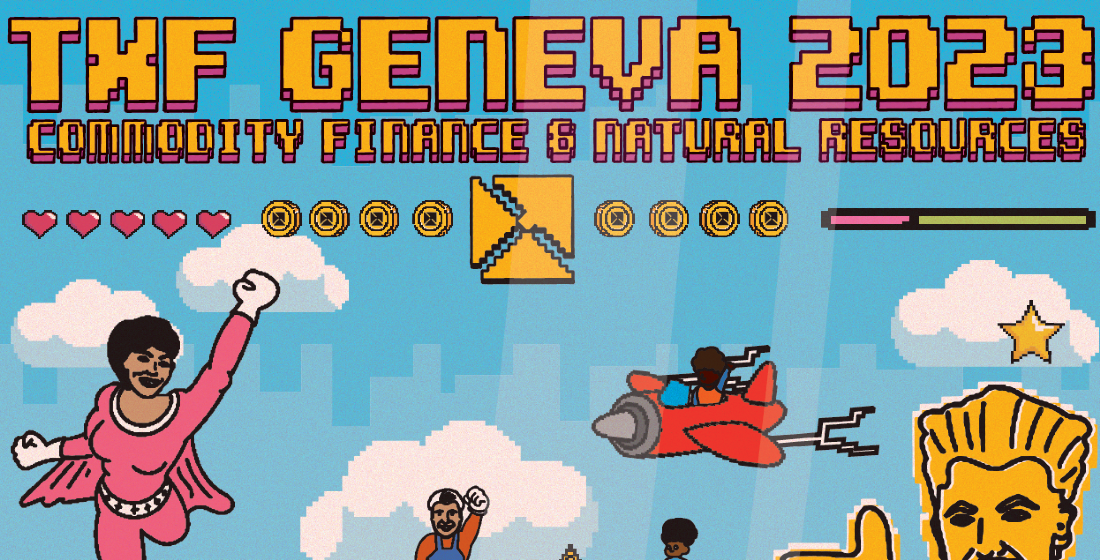TXF Geneva 2023: Top takeaways
TXF returned to the Hotel President Wilson for its annual Geneva event. Dealmakers in the commodity trade finance community gathered for a day of networking and industry content at the end of Commodities Week.

The 2023 edition of TXF Geneva arrived last week amid uncertain currents in the commodity trade finance community. Demand for liquidity has eased thanks to the record profits that many traders achieved across 2022 but hazards can be seen across the industry.
Geopolitical tension was at the forefront of a number of conversations across the conference. Sanctions on Russia are ongoing and the US-China rivalry threatens to end the era of globalised free trade. Export controls on key commodities may become a permanent feature of international politics in future.
Higher costs can be seen everywhere, from pricing on debt to expensive due diligence procedures. The spectre of fraud has had a material impact on the cost of doing business in commodities. SMEs bear the brunt of this damage as financing becomes harder to access.
With this in mind, it was pleasing to see that optimism was not in short supply. A hallmark of commodity trading has always been creative problem solving and 2023 has been no exception. ECA finance, sustainability-linked loans and emerging products like lithium point to a brighter future for the industry.
This year’s edition of TXF Geneva was packed into one day of high quality networking and content at the Hotel President Wilson.
Reasons for optimism
An enduring positive through the pandemic and war in Ukraine has been the resilience of international trade. Commodity traders have played an essential role in maintaining supply chains in the face of export restrictions and panicked consumer purchasing patterns. Meanwhile the value of trade globally has rebounded since 2020. It is important to remember that amid gloomy headlines, the opportunities are numerous. Traders have reported greater investments in power and renewables as they look to get ahead of the curve on biodiesel, carbon credits and hydrogen.
Trade diversifies as tensions rise
Fragmentation has become a buzzword around international trade thanks to rhetoric from Beijing and Washington. The reality is more complex. The supply chains between the US and China are too extensive to be undone overnight. Rather, trade is growing at a faster rate through intermediaries between the two like Vietnam, Cambodia and Mexico. According to Marc Auboin, Senior Advisor at the World Trade Organisation, comparative advantage is already relocating trade into emerging markets.
For banks and traders, the tables have turned
At the onset of war in Ukraine, the commodity trading environment was turned upside down. Price volatility led to margin calls that could only be supported by emergency liquidity facilities from lenders. Traders have since reaped the benefits of this volatility through record profits. From famine to feast, the largest trading houses now have a cash buffer that will let them pick and choose their markets going forwards. Demand for commodity finance will not be as pressing in the coming months.
SMEs lean on supply chain support
One clear conclusion from the black swan events of recent years is that bank finance alone cannot provide the flexibility that SMEs require. In times of uncertainty, larger corporates are often better placed to provide interim support for their supply chain partners. This can come in the form of short-term bridge financing, logistical support or expertise on infrastructure projects. They can also leverage their size to pool supplies from a number of a smaller producers and create a product that is more attractive to buyers.
Traders look to demonstrate ESG commitments
Sustainability is now at the forefront of the industry but both traders and banks face challenges in demonstrating their ESG commitments to the public. The prevalence of fossil fuels in commodity trading will not end until consumer demand recedes so trading houses must find other ways of overcoming public scepticism. Investments in renewables will help, but arguably the greatest point of difference could come from the metals & mining industry. Financing for new sources of critical minerals will support the energy transition, and large corporates can use their profile to improve governance across the industry.
SLLs set the tone
Sustainability-linked loans are increasingly popular financing tools for traders. They establish clear metrics for improvement on ESG and actively incentivise change with discounts and penalties on pricing. The next step will come through proper regulation and consensus. The LMA’s recently published framework for SLLs will help with standardisation but issues must still be resolved. How can all parties ensure that their KPIs are both ambitious and comprehensive? Should third-party agencies always be employed to independently verify them? What mechanisms should there be to encourage traders to reinvest their discounts into sustainable initiatives? If done correctly, SLLs could create a virtuous cycle of investment in decarbonisation.
Lithium supply chains look shaky
Lithium is an essential component in the most popular design of EV batteries. Its demand profile is extraordinary and prices soared last year. This has cooled over 2023 thanks to overproduction but the market has still recorded strong growth. The key issue facing lithium producers is how best to deliver EV-grade product to buyers. Lithium extraction is extremely challenging, and project developers often lack the experience, the financing or the offtake agreements to reach first production. For this reason the pipeline of new lithium mines already looks threadbare. If lithium has a future as a traded product issues must be resolved around security of supply.
Realpolitik leads the way for ECAs
In times of crisis, change is often the only path forwards and ECAs have certainly embraced opportunity. The burgeoning ties between commodity traders and ECAs marks a remarkable convergence. While once ECAs were known for long-term tenors and lengthy gestation periods, they have now recognised an imperative to move quickly in support of their exporters. Energy and metals have been the subject of many deals so far but in future expect food security to become a topic for discussion among ECAs.





